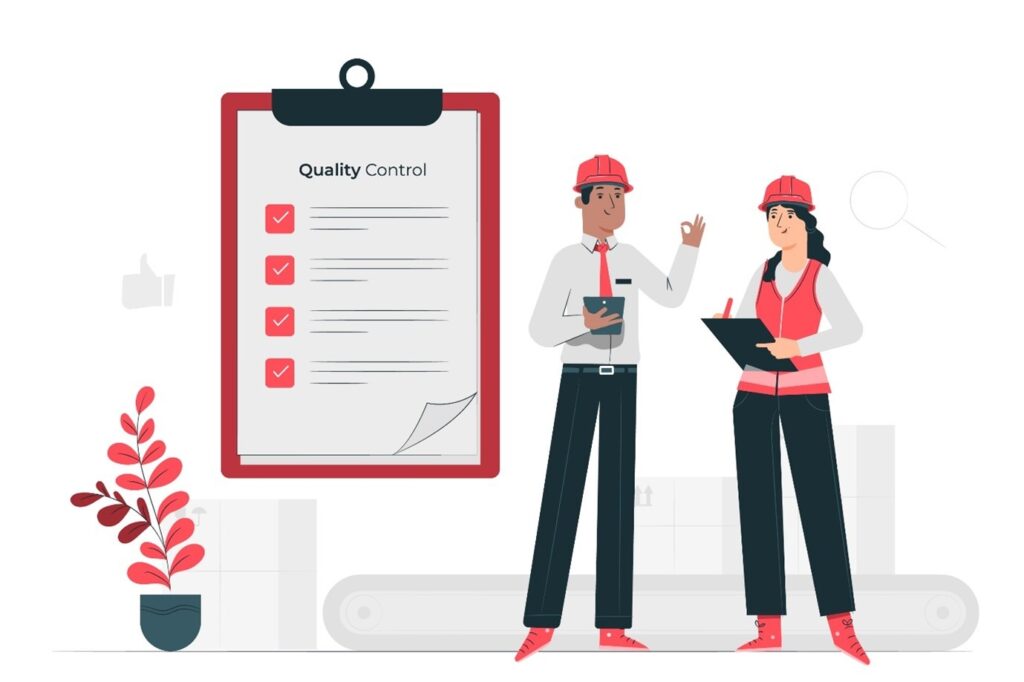I. Introduction
A. Introduction to GMP Certification
Good Manufacturing Practice (GMP) Certification stands as a pivotal standard, ensuring unwavering product quality and adherence to controls. Initially designed for the pharmaceutical domain, GMP guidelines have transcended boundaries, spanning various sectors to uphold product integrity and safety universally. Companies attaining GMP Certification showcase their commitment through rigorous adherence to standards, validated by regular inspections and audits. This certification encompasses every facet of production, from raw material sourcing to staff hygiene, emblematic of manufacturing prowess.
B. The Crucial Role of GMP Certification Across Industries
GMP Certification holds paramount significance across diverse sectors, including pharmaceuticals, food and beverages, cosmetics, and medical devices. In the pharmaceutical realm, it guarantees adherence to stringent quality standards, curbing contamination risks and production errors. Likewise, within the food and beverage domain, GMP maintains product safety and quality, shielding consumers from potential illnesses. Moreover, in cosmetics, GMP standards ensure product purity and safety, while medical device manufacturers rely on GMP to assure the safety and efficacy of their products for medical use.
C. Purpose of the Blog
This blog endeavors to furnish a comprehensive guide to GMP Certification, catering to both novices and seasoned professionals. It delves into critical aspects such as definition, significance, certification procedures, and the benefits of GMP Certification. Furthermore, it offers insightful case studies showcasing successful GMP Certification journeys and delves into future trends shaping GMP standards. By providing this holistic guide, the aim is to empower readers with the requisite knowledge and resources to pursue GMP Certification, thereby fostering business success and expansion.
II. Understanding GMP Certification
A. Defining Good Manufacturing Practices (GMP)
Good Manufacturing Practices (GMP) form the bedrock of quality assurance in product manufacturing. Covering all production aspects, from raw materials to employee hygiene, GMP ensures unwavering adherence to stringent quality standards, crucial for product safety and public health.
B. The Evolution of GMP Standards
The roots of Good Manufacturing Practices can be traced back to the mid-20th century, catalyzed by significant public health crises. Events like the thalidomide tragedy highlighted the urgent necessity for robust manufacturing standards. Consequently, regulatory bodies such as the FDA introduced GMP regulations to safeguard pharmaceutical safety and efficacy. Over time, these standards have undergone global evolution, with organizations like the WHO and ICH harmonizing GMP practices worldwide.
C. Regulatory Oversight in GMP Certification
GMP Certification falls under the purview of various regulatory bodies worldwide. In the United States, the FDA leads GMP regulations, conducting thorough inspections to ensure compliance. Similarly, the EMA oversees GMP adherence in Europe, while the WHO provides international guidelines. Collaborative initiatives by regulatory bodies like the ICH further streamline GMP standards globally, reinforcing public health and international trade integrity.
III. The Importance of GMP Certification
A. Ensuring Product Safety and Quality
GMP Certification stands as a cornerstone in ensuring product safety and quality. Manufacturers, through strict adherence to GMP standards, implement robust processes to prevent contamination and errors during production. This meticulous approach guarantees consistent product quality, particularly crucial in sectors like pharmaceuticals and food, where safety is paramount.
B. Building Consumer Trust and Confidence
Consumer trust is paramount across all industries, with GMP Certification playing a pivotal role in nurturing and maintaining this trust. When consumers encounter a GMP-certified product, they have confidence in its production under stringent quality control measures. This assurance is particularly crucial in critical sectors like pharmaceuticals and food, where product efficacy and safety are non-negotiable. GMP Certification underscores a company’s commitment to maintaining high standards, fostering brand loyalty, and enhancing market reputation.
C. Compliance with Regulatory Requirements
Adherence to regulatory standards is a vital aspect of GMP Certification. Regulatory bodies worldwide, such as the U.S. FDA and the European Medicines Agency, mandate compliance with GMP guidelines to ensure product safety and quality. GMP Certification assists companies in meeting these stringent regulations, mitigating legal risks and penalties. It ensures consistent adherence to legal and ethical standards, streamlining operations, and minimizing the risk of regulatory actions like product recalls.
IV. Common Challenges in Achieving GMP Certification
A. Resource Constraints and Budget Limitations
Managing resource constraints and budget limitations poses a significant challenge in achieving GMP Certification. Implementing GMP standards requires substantial financial investment in facility upgrades and equipment procurement. For smaller companies, this upfront cost can be daunting, and ongoing expenses like audits and training further strain budgets.
B. Complexity of Documentation and Compliance Requirements
The complexity of documentation and compliance requirements is another hurdle. GMP guidelines mandate meticulous record-keeping, including detailed SOPs and batch records. Maintaining accurate and accessible documentation demands considerable effort, especially for companies without established quality management systems.
C. Resistance to Change and Organizational Culture
Resistance to change and organizational culture can impede GMP adoption. Employees accustomed to traditional methods may resist the necessary process changes. Overcoming this resistance requires effective change management, clear communication, and leadership commitment to fostering a culture of quality and compliance.
V. Solutions to Overcome Challenges
A. Cost-Effective Strategies for Resource Allocation
To overcome resource constraints and budget limitations, companies can employ cost-effective strategies for resource allocation. This may involve prioritizing investments based on risk assessments to focus on areas with the greatest impact on product quality and safety. Companies can explore options for financing equipment purchases or facility upgrades, such as leasing arrangements or accessing government grants and incentives. Collaborating with suppliers to negotiate favorable terms and bulk purchasing discounts can further reduce costs.
B. Streamlining Documentation Processes
Streamlining documentation processes can help alleviate the complexity of documentation and compliance requirements associated with GMP Certification. Implementing electronic document management systems (EDMS) can facilitate the creation, revision, approval, and storage of documents in a centralized and organized manner. Automation tools can generate standardized templates for SOPs, batch records, and other documentation, reducing the time and effort required for manual document preparation. Establishing clear workflows and responsibilities for document control ensures that documentation processes are efficient and compliant with GMP guidelines.
C. Engaging Employees and Fostering a Culture of Quality
Engaging employees and fostering a culture of quality is essential for overcoming resistance to change and organizational culture challenges. Companies can involve employees in the GMP Certification process by providing training and opportunities for participation in improvement initiatives. Encouraging open communication and feedback channels allows employees to voice concerns and contribute ideas for process improvement. Recognizing and rewarding individuals and teams that demonstrate commitment to quality reinforces desired behaviors and values. Leadership support and visible commitment to GMP principles set the tone for organizational culture and inspire employees to embrace GMP standards as integral to their work.
VI. Benefits of Maintaining GMP Certification
A. Continuous Improvement and Innovation
Maintaining GMP Certification fosters a culture of continuous improvement and innovation within an organization. GMP standards require companies to regularly review and update their processes to ensure compliance with evolving regulatory requirements and industry best practices. This commitment encourages companies to seek innovative solutions to enhance efficiency, reduce waste, and optimize product quality. By embracing continuous improvement, companies can stay ahead of the competition, adapt to changing market demands, and drive innovation.
B. Enhanced Reputation and Brand Value
GMP Certification enhances a company’s reputation and brand value by demonstrating its commitment to producing high-quality, safe, and reliable products. GMP-certified companies are perceived as trustworthy and credible by consumers, regulatory authorities, and business partners alike. The GMP seal of approval serves as a powerful marketing tool, signaling to customers that the company adheres to rigorous quality standards and prioritizes their safety and satisfaction. A strong reputation for quality and reliability can differentiate a company from its competitors, attract new customers, and foster long-term loyalty among existing ones.
C. Increased Customer Satisfaction and Loyalty
Maintaining GMP Certification is directly linked to increased customer satisfaction and loyalty. GMP-certified products are perceived as being of superior quality and safer for consumption, leading to greater confidence and satisfaction among consumers. Meeting GMP standards ensures that products consistently meet or exceed customer expectations, reducing the likelihood of product defects or recalls. Satisfied customers are more likely to repeat purchases, recommend the company to others, and remain loyal to the brand over time. Building strong relationships with customers based on trust and satisfaction is essential for long-term business success and profitability.
VII. Conclusion
A. Recap of GMP Certification Importance
In conclusion, GMP Certification is pivotal in ensuring product quality, safety, and compliance across industries. Adhering to GMP standards showcases a commitment to maintaining manufacturing excellence, ultimately ensuring safer products for consumers. The benefits are vast, including enhanced reputation, increased customer satisfaction, and reduced risks of recalls. Moreover, GMP Certification fosters continuous improvement and innovation, driving business growth and competitiveness.
B. Encouragement for Pursuing GMP Certification
For businesses contemplating GMP Certification, the benefits outweigh the challenges. It not only ensures regulatory compliance but also provides a competitive edge by boosting brand reputation and customer trust. Pursuing GMP Certification signifies a dedication to quality and safety, setting companies apart from competitors and positioning them for long-term success. Despite initial investments, the rewards in operational efficiency, market access, and customer satisfaction justify the endeavor.
C. Final Thoughts on Quality and Safety Commitment
At its core, GMP Certification signifies a steadfast commitment to quality and safety. It assures consumers that products are manufactured under stringent standards and undergo rigorous quality control measures. In navigating today’s complex marketplace, maintaining GMP Certification is vital for building trust, ensuring compliance, and safeguarding public health. Prioritizing quality and safety at every production stage allows companies to surpass regulatory requirements and exceed customer expectations, fostering sustainable growth and success.


